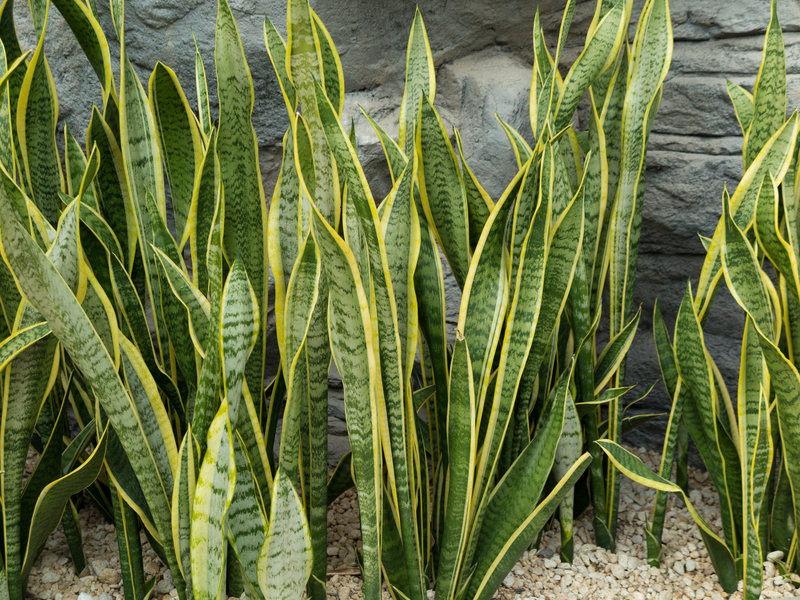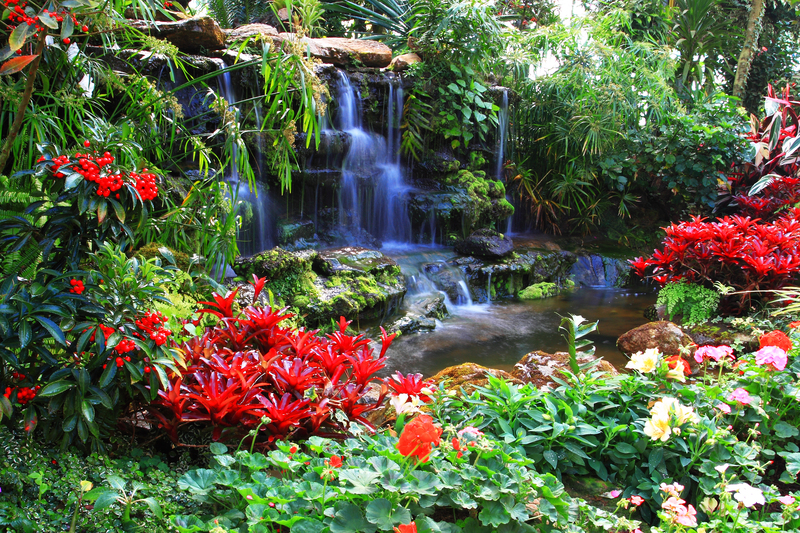Harnessing the Benefits of Container Gardening
Posted on 25/08/2025
Harnessing the Benefits of Container Gardening: A Comprehensive Guide
Container gardening has rapidly grown in popularity among both urban dwellers and rural residents. With limited space, unpredictable climates, and the desire for fresh, healthy produce or beautiful ornamentals, more people are turning to container gardens as a practical and visually appealing solution. This comprehensive guide will walk you through the myriad benefits of container gardening, how to start your own thriving container garden, and creative ideas to maximize your harvest or decorative impact.
What Is Container Gardening?
At its core, container gardening is the practice of growing plants--be they flowers, herbs, vegetables, or even small trees--in pots, tubs, or other portable containers rather than directly in the ground. This method brings with it a range of advantages that transcend merely saving space. From improving plant health to enhancing accessibility, container gardens offer solutions tailored for diverse lifestyles and skill levels.
The Appeal of Container Gardening
- Accessibility for All: Perfect for individuals with mobility challenges as containers can be raised to a convenient height.
- Versatility: Grow a wide variety of plants, even in apartments, patios, balconies, rooftops, or indoors.
- Mobility: Move plants to chase sunlight, shelter from storms, or create new design layouts.
- Control: Fine-tune soil quality, drainage, and nutrients for each plant's needs.
- Reduced Pests & Diseases: Fewer soil-borne pests and diseases compared to traditional gardening.

Top Benefits of Container Gardening
1. Space Optimization
One of the primary benefits of container gardening is its ability to transform small or unusual spaces into lush, green havens. Urban gardeners often have little more than a balcony or a few feet of patio--yet with thoughtful container placement, even these spaces can yield abundant herbs, vegetables, or flowers.
- Vertical gardens: Stack containers on shelves, hang them from walls, or use vertical planters for even greater space efficiency.
- Creative containers: Repurpose items like buckets, barrels, or even old boots for planting.
2. Enhanced Plant Health and Flexibility
Container gardening enables you to adjust soil composition for different plants, which can help you grow healthy produce and flourishing flowers, even if your backyard soil is poor. Container gardeners can better manage moisture levels and avoid waterlogged roots or drought stress. You also have increased control over fertilization and can quickly remove or quarantine any diseased plants to protect the rest.
3. Accessibility and Convenience
For anyone with limited mobility, container gardens can be raised or placed on tables, carts, or ledges, eliminating the need for bending or kneeling. This inclusive approach opens gardening to a broader range of enthusiasts--including children and the elderly--fostering intergenerational enjoyment and learning.
4. Creativity and Aesthetic Value
With container gardening, you're free to explore a diverse array of design ideas. Mix and match colors, heights, and textures, or create themed displays such as herb spirals, edible landscapes, or vibrant flower arrangements. Easily change layouts with the seasons or your moods, keeping your garden ever fresh and engaging.
5. Environmental Advantages
Growing plants in containers allows for efficient water usage and minimal soil disruption. Container gardens can help cool urban "heat islands" and provide habitats for pollinators such as bees and butterflies. Mobile containers can even serve as an early-warning system against pests, diseases, or environmental hazards, since issues are often easier to spot and remedy.
How to Start a Container Garden
Creating a container garden is straightforward, but success comes from careful planning and execution. Here's a comprehensive step-by-step guide:
Step 1: Select the Right Containers
- Material: Choose from terracotta, ceramic, plastic, metal, or recycled materials. Each affects moisture retention and temperature differently.
- Size: Ensure containers are big enough for root development. Small pots dry out quickly; larger containers provide more stable conditions.
- Drainage: Good drainage is crucial. Look for containers with pre-drilled holes or add your own.
Step 2: Select Suitable Potting Mix
- Soil quality: Use a high-quality, well-draining potting mix rather than garden soil to prevent compaction and ensure proper airflow.
- Amendments: Add compost, slow-release fertilizer, or coconut coir for extra nutrition and moisture retention.
Step 3: Choose the Right Plants
- Know your microclimate: Consider the sun exposure, wind, and rainfall in the location for your containers.
- Best picks: Herbs (basil, mint, thyme), leafy greens, tomatoes, strawberries, succulents, and annual flowers all thrive in containers.
- Companion planting: Grow plants that benefit one another or repel pests together in one container for healthier harvests.
Step 4: Plant and Arrange
- Placement: Arrange taller plants in the center or rear; trailing and low-growing plants near the edges for maximum visual appeal.
- Spacing: Give plants ample room to grow to avoid overcrowding and inhibit disease.
Step 5: Watering and Feeding
- Watering schedule: Container gardens dry out faster than ground gardens. Water consistently and deeply--ideally in the early morning or late afternoon.
- Fertilization: Since nutrients leach out more rapidly, use a balanced liquid fertilizer every couple of weeks for healthy growth.
Step 6: Maintenance & Care
- Prune and deadhead: Remove spent flowers and damaged leaves to encourage new growth.
- Monitor for pests: Regularly inspect leaves and soil for insects or diseases, and take prompt action if needed.
- Rotation: Change plant positions occasionally to ensure even light exposure.
Innovative Container Gardening Ideas
To truly harness the benefits of container gardening, consider these creative approaches for visual interest and productivity:
- Edible Containers: Grow salads or culinary herbs in decorative pots near your kitchen door for easy harvests.
- Pollinator Pots: Choose flowers such as lavender, marigold, or salvia to attract bees and butterflies.
- Succulent Displays: Arrange drought-tolerant succulents and cacti in artistic vessels for low-water gardening.
- Seasonal Swaps: Rotate bulbs for spring color, annuals for summer, and evergreens for winter structure.
- Vertical Walls: Use fabric pockets or wall-mounted troughs to maximize growing area on balconies or fences.
- Repurposed Containers: Plant in old teapots, crates, or tin cans for rustic charm and sustainability.
Common Challenges in Container Gardening (and Solutions)
1. Watering Woes
- Challenge: Containers dry out faster, especially in hot climates.
- Solution: Mulch the soil surface, use water-retaining crystals, group containers together, or install a drip irrigation system.
2. Stunted Plant Growth
- Challenge: Restricted root space limits plant size and productivity.
- Solution: Start with larger containers when possible, and repot crowded plants annually.
3. Nutrient Deficiencies
- Challenge: Frequent watering washes away minerals.
- Solution: Use slow-release organic fertilizers and supplement with compost tea or seaweed extract.
4. Temperature Extremes
- Challenge: Pots heat up and cool down quicker than the earth.
- Solution: Shade roots with mulch, cluster pots for insulation, or move containers out of extreme temperatures as needed.
Sustainability in Container Gardening
Container gardening goes hand in hand with sustainable practices. By using recycled materials, collecting rainwater, and growing organic produce, you contribute to a more eco-friendly lifestyle. Additionally, the portability of containers means you can easily adapt your garden as your needs change, reducing waste over time.
- Reusing and Upcycling: Turn old items into plant pots rather than sending them to landfills.
- Water Conservation: Install rain barrels and use efficient drip irrigation for sustainable watering.
- Composting: Add kitchen scraps to small-scale compost systems, returning nutrients to your containers.
Expert Tips for Thriving Container Gardens
- Select the right plants for your climate and light levels. Not every plant will thrive in each situation--do your research or choose resilient varieties.
- Group plants by water and light needs. This helps you target care and ensures stronger, healthier growth.
- Rotate plants through the year. Make full use of your containers by swapping out plants seasonally for continuous interest.
- Monitor drainage and avoid waterlogged soil. If your container lacks holes, don't be afraid to add a few.
- Use mulch to maintain temperature and moisture. Organic mulch such as bark chips or straw works wonders.
- Observe your plants daily. Quick responses to changes in health or pests will save your garden in the long run.
Getting Children and Families Involved
Container gardening is a wonderful way to inspire curiosity and teach responsibility in children. Easy-to-handle pots, visible plant growth, and the sense of accomplishment from harvesting their own veggies or flowers make gardening deeply rewarding.
- Start with quick-growing plants: Radishes, lettuce, and sunflowers provide rapid results.
- Turn it into a family project: Assign each person their own pot to decorate and care for.
- Connect lessons to science, nutrition, and art: Draw plant growth stages or use herbs in home-cooked meals.

Final Thoughts: Embrace the Power of Container Gardening
Whether you have a balcony, rooftop, patio, windowsill, or garden bed, container gardening is an accessible, creative, and practical way to grow beautiful plants and healthy produce. With careful planning and a little experimentation, you can enjoy the many advantages container gardening has to offer--regardless of your space or experience level.
Start small, dream big, and let your container garden flourish!
Frequently Asked Questions on Harnessing the Benefits of Container Gardening
What vegetables grow best in containers?
Tomatoes, peppers, lettuce, radishes, spinach, and herbs like parsley and basil are ideal for container cultivation.
How often should I water container gardens?
Pots typically require more frequent watering--daily during hot months and less often in cool or rainy periods. Aim for consistent moisture but avoid soggy soil.
What are the best containers for gardening?
Choose sturdy containers with good drainage made of clay, ceramic, plastic, or recycled materials. Go for larger sizes for most vegetables and deeper roots.
Transform your available space and enjoy a greener, healthier lifestyle by harnessing the endless benefits of container gardening today!

